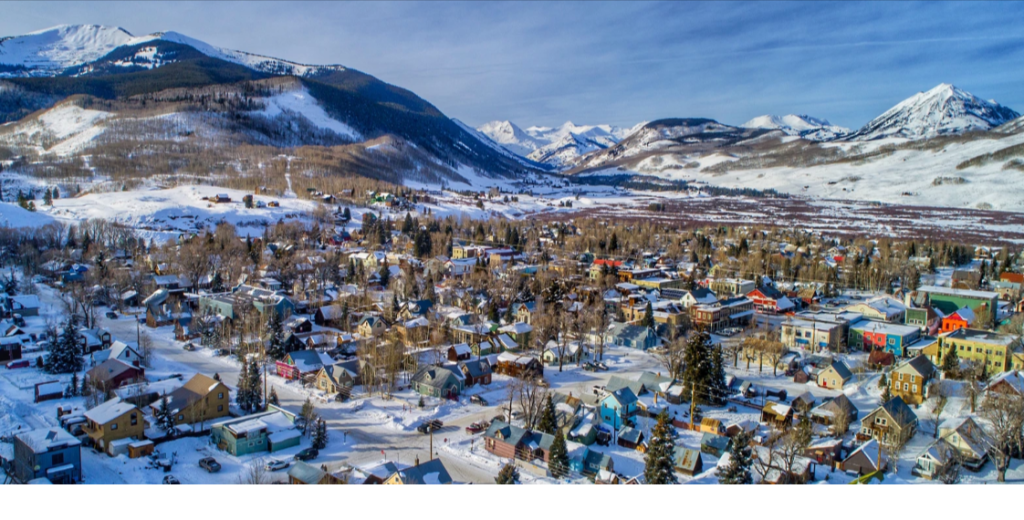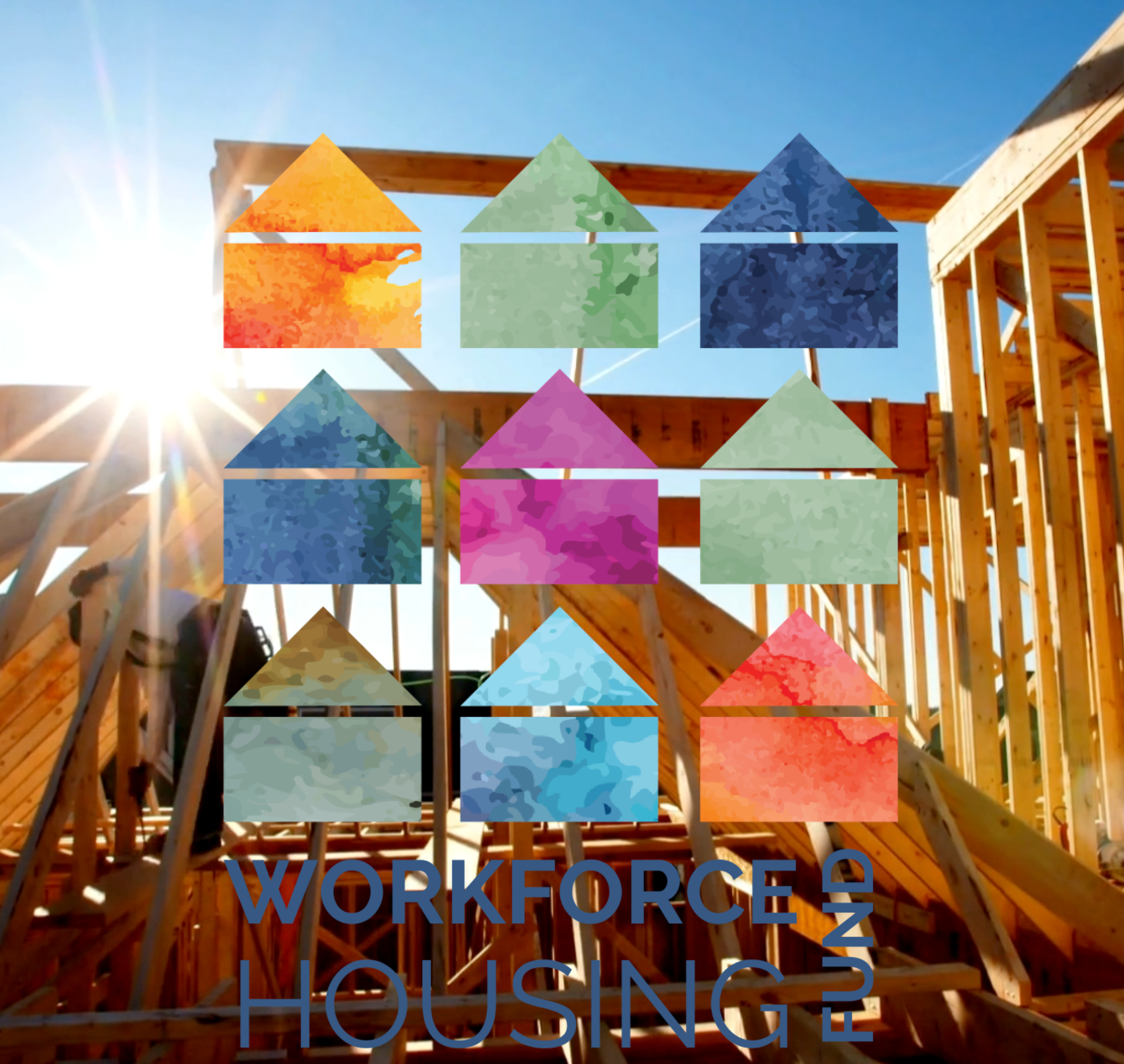
Across mountain towns in the United States, the need for workforce housing is becoming increasingly critical. As these areas expand both economically and in popularity, the individuals who form the backbone of these communities—teachers, police officers, firefighters, and other essential workers—find themselves priced out of living in the areas they serve. Workforce housing presents a solution to this growing disparity, offering affordable and accessible living options for those essential to the community’s functioning.
In essence, workforce housing is designed to provide affordable living options for workers who earn a middle-range income, typically between 60 and 120 percent of the area’s median income. Unlike traditional affordable housing, which serves families at or below 60% of median income, workforce housing targets a segment of the population that, despite earning a steady income, struggles to find affordable housing due to rising real estate prices and rental rates.
Several mountain towns and regions have recognized the urgency of the situation and have initiated workforce housing projects. For example, in Vermont, the Killington Ski Resort has announced a significant investment towards developing hundreds of housing units to support its workforce. This move mirrors efforts across the country, from Colorado to Utah, where similar initiatives aim to provide housing solutions for local workers who are essential to the tourism and local economy but can’t afford to live near their places of work.
Legislation at both the state and federal levels is also underway to support the construction and preservation of affordable workforce housing. For instance, bills have been introduced to encourage local governments, nonprofit organizations, and the private sector to invest in creating homes for low-income workers. Additionally, state initiatives are exploring various methods, including tax incentives and streamlined permitting processes, to facilitate the development of workforce housing.
Despite these efforts, challenges remain. Equity gaps persist, particularly among traditionally underserved communities, and local opposition to new development can stall progress. Moreover, the gap between the cost of living and wages for essential workers continues to widen, underscoring the need for a comprehensive approach that includes not only building more housing but also addressing income inequality and improving land use policies.
As mountain towns and other communities grapple with these issues, workforce housing stands out as a crucial component of the solution. By providing affordable, accessible housing for those who play key roles in our communities, we can ensure that these areas remain vibrant, diverse, and inclusive places to live and work. The push towards more workforce housing projects, supported by legislative efforts and community initiatives, is a step in the right direction towards addressing America’s affordable housing crisis and ensuring that our communities continue to thrive.
In Flagstaff, Arizona, the affordable housing crisis is a pressing issue, with demand far exceeding the supply. The city is experiencing a significant shortage of affordable homes, requiring an addition of 7,000 homes to meet the current need. A notable effort to address this challenge is the conversion of a hotel into transitional housing, providing 44 units for up to 2 years for households experiencing homelessness. This project is part of a broader ten-year plan aiming to reduce the affordable housing need by half.
The affordability crisis in Flagstaff is severe, with a report from Housing Solutions of Northern Arizona highlighting that a minimum-wage worker would need to work approximately 87 hours per week to afford a two-bedroom apartment, which averages $1,758 per month. To rent such an apartment, a household would need an annual income of over $70,000, while the 2019 Census showed a median individual income of $21,503 in Flagstaff. This disparity is described as “extreme,” affecting all income levels and property types. The report suggests that increasing the housing supply alone won’t solve the affordability crisis and advocates for reversing the state ban on municipalities’ ability to regulate short-term rentals among other measures.
Flagstaff’s situation is a stark illustration of the broader affordable housing challenges faced by many communities, emphasizing the need for innovative solutions and comprehensive planning to ensure that residents can afford to live in the cities where they work and contribute.
Pagosa Springs has seen record-breaking business but faces a stark inability to attract enough staff due to the lack of affordable housing. The town is working on developing incentives for affordable housing projects, including partnerships with local schools, hospitals, and utility companies to offer a more attractive package for developers. Despite efforts, the local newspaper’s classifieds show a dramatic mismatch between available jobs and affordable living spaces.
In response to the critical need for workforce housing, Pagosa Springs has initiated community dialogues to explore creative solutions, such as repurposing existing structures and optimizing land use for new developments. Local businesses, recognizing the impact of housing shortages on their operations, have started collaborating with the municipality to fund and support housing projects directly. These partnerships aim to not only address the immediate needs but also ensure long-term sustainability and integration of the workforce into the fabric of the community, underscoring a collective commitment to overcoming the housing crisis.
Telluride has faced a significant housing crisis, exacerbated by debates over short-term rental (STR) regulations. Despite efforts by local activists, a ballot initiative to cap STRs failed. However, there were some victories in increasing funds for affordable housing through increased fees on STR business licenses.
Following the failure of the ballot initiative to cap STRs, Telluride’s community leaders and stakeholders have regrouped to formulate a comprehensive strategy that addresses the root causes of the housing shortage. This includes advocating for legislative changes at the state level to grant local authorities more control over housing policies and engaging in public-private partnerships to unlock new funding avenues for affordable housing developments. These efforts reflect a growing recognition that a multi-faceted approach, beyond just regulating STRs, is essential for creating a sustainable housing ecosystem in Telluride.
Dillon is pioneering a project on U.S. Forest Service land to create affordable workforce housing, a first of its kind involving federal land in such a manner. The initiative bypasses typical zoning hearings, aiming to alleviate the local affordable housing shortage without turning Colorado campgrounds into condos.
The U.S. Forest Service land project in Dillon serves as a model for leveraging federal lands in addressing local housing needs. The project’s progress has sparked interest from other mountain communities facing similar challenges, leading to discussions on federal and state collaboration to replicate this model elsewhere. By demonstrating the potential for innovative land use and cross-sector partnerships, Dillon’s initiative offers valuable lessons on the scalability and impact of such projects on alleviating workforce housing shortages.
Durango’s situation reflects the broader trends in the region, where high real estate prices have outpaced the earnings of local workers. The town is seeing a demographic shift as workers leave and retirees or non-working individuals take their place. The local college has had to accommodate students in hotels due to the housing squeeze. Efforts to create more housing include limiting STRs and exploring the development of accessory dwelling units (ADUs).
Durango is actively exploring new zoning laws and incentives to encourage the development of ADUs, recognizing their potential to quickly and efficiently increase the housing stock for local workers. Efforts are also underway to streamline the permitting process and provide technical support to homeowners interested in adding ADUs. These initiatives are part of a broader strategy to diversify housing options and address the mismatch between housing availability and the needs of the workforce, thereby strengthening the community’s resilience to housing market pressures.
Voter initiatives across these towns have shown strong support for increasing funding and resources towards affordable housing. Measures range from increasing the supply of affordable housing in Basalt, imposing taxes on non-primary residences in Crested Butte to fund housing, and leveraging accommodation taxes in Leadville for affordable housing programs. Ouray has passed a measure to allocate funds from a new excise tax on STRs towards housing programs, and Summit County has extended a levy for constructing workforce rentals and owner-occupied housing units.
The voter-supported initiatives across Basalt, Crested Butte, Leadville, Ouray, and Summit County highlight a growing trend of community-driven efforts to tackle the affordable housing crisis. These initiatives are now being complemented by targeted outreach programs to educate residents on the benefits of affordable housing and garner support for upcoming projects. Furthermore, local governments are leveraging these mandates to attract state and federal funding, aiming to maximize the impact of voter-approved measures and accelerate the development of housing projects that cater to the diverse needs of their workforce.
Winter Park has struggled with an influx of new residents and skyrocketing housing prices post-COVID-19. The town has implemented a “short-term fix program,” offering subsidies for converting STR properties into long-term rentals for local tenants. Despite these efforts, the town acknowledges the ongoing challenges in making living affordable for the workforce that sustains it.
These efforts highlight the multifaceted approach mountain towns are taking to combat the affordable housing crisis, from voter initiatives and strategic partnerships to innovative land use agreements. However, the persistent gap between available jobs and affordable living spaces continues to challenge these communities.
In addition to the “short-term fix program,” Winter Park is investing in long-term strategies such as land banking and zoning reforms to facilitate the development of affordable housing on a larger scale. The town is also engaging with regional and state housing authorities to align its efforts with broader initiatives aimed at increasing housing affordability. By taking a proactive stance on housing, Winter Park aims to create a sustainable living environment that supports both current and future generations of workers, ensuring the town remains a vibrant community for all residents.
Jackson Hole, a picturesque region known for its stunning landscapes and outdoor recreation opportunities, is facing a severe workforce housing crisis. The situation has reached a point where the local working class is being forced to consider leaving, driven by sky-high real estate prices and a market that caters increasingly to the affluent, leaving long-time residents and workers with few affordable living options. A vivid example of this is a resident who has moved 40 times over a couple of decades, illustrating the transient nature of housing for many in the area. The influx of wealth and tourists, alongside a real estate market that saw buyers spending over $2 billion in the first nine months of 2021 alone, exacerbates the situation, creating a significant mismatch between local income levels and housing costs.
Efforts to address the housing shortage have encountered various challenges. For instance, a developer’s attempt to convert an existing facility into workforce housing met with resistance from local government and community members, delaying potential relief for those living in precarious conditions. The proposed project faced opposition over concerns about community character and increased traffic, highlighting the complex dynamics at play when attempting to introduce affordable housing solutions in established neighborhoods.
Despite these hurdles, there are some signs of progress. Teton County has made historic moves to install affordable housing, with significant philanthropic pledges aiming to bolster the construction of homes for those in need. However, this initiative, too, faces the daunting task of navigating community concerns and the intricate process of development approval. These efforts underscore the urgent need for a comprehensive strategy that balances the interests of various stakeholders while addressing the critical need for affordable workforce housing.
In essence, Jackson Hole exemplifies the broader challenges facing mountain communities, where the push and pull between development, conservation, and affordability continue to shape the future of these beloved regions. The ongoing dialogue between developers, local government, and residents will be crucial in forging a path forward that ensures Jackson Hole remains accessible and sustainable for those who keep the community thriving.
